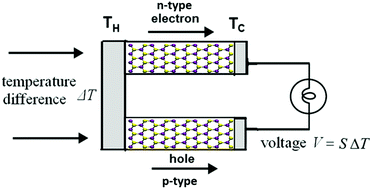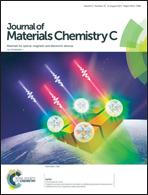Thermoelectric properties of two-dimensional transition metal dichalcogenides
Abstract
2D transition metal dichalcogenides (2D TMDs) (MoS2, WS2, etc.) have attracted considerable attention recently due to their unique structures, strong chemical stability and attractive semiconducting characteristics. In particular, these 2D materials have shown great potential for thermal management and thermoelectric energy generation due to their favourable combination of electrical and thermal transport properties, which can lead to a significantly large figure-of-merit. Importantly, recent studies have shown that various approaches, such as chemical functionalization, chemical doping, defect engineering, strain engineering and also forming heterostructures, can further enhance their figure-of-merit (ZT). In this article, we review recent advances in the study of the thermoelectric properties of 2D TMDs. We first briefly discuss thermoelectric effects, such as the Peltier and Seebeck effects, the coefficient of performance and figure-of-merit (ZT), and point out why TMD materials are ideal candidates for thermal management and thermoelectric applications. Next, we review the progress made in the understanding of the thermoelectric properties of 2D TMDs. Then, we discuss how chemical functionalization, chemical doping, defect engineering, strain engineering, forming heterostructures affect the thermoelectric properties of 2D TMDs. Finally, we present our conclusions and future perspectives.

- This article is part of the themed collection: Recent Review Articles


 Please wait while we load your content...
Please wait while we load your content...